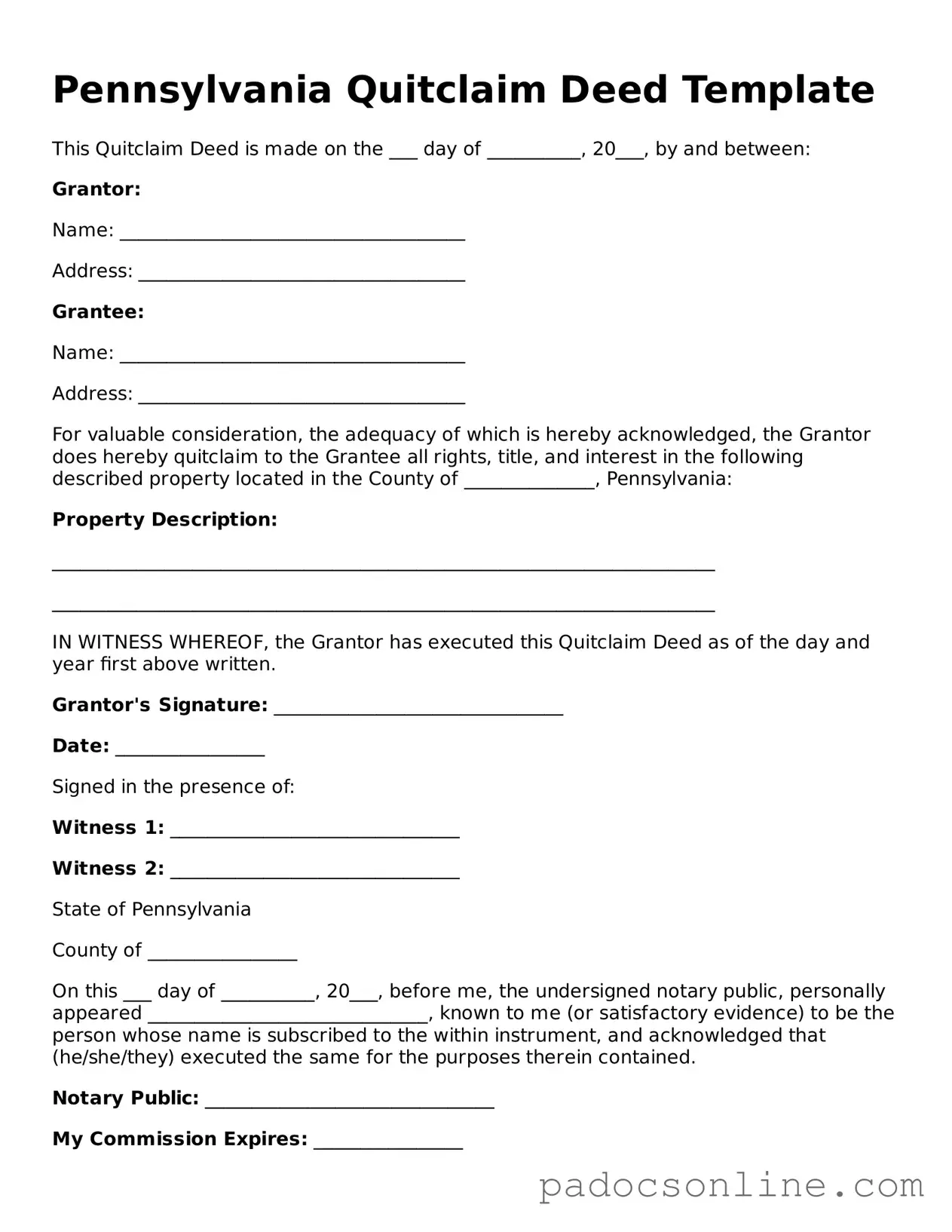Filling out a Pennsylvania Quitclaim Deed form can seem straightforward, but many people make common mistakes that can lead to complications. One frequent error is failing to include the correct names of the parties involved. It is essential to ensure that the grantor (the person transferring the property) and the grantee (the person receiving the property) are accurately named. Missing or incorrect names can invalidate the deed.
Another mistake is neglecting to provide a complete legal description of the property. The legal description should be precise and may include details such as the lot number, block number, and any relevant parcel numbers. Omitting this information can create confusion regarding which property is being transferred.
Many individuals also overlook the requirement for signatures. Both the grantor and the grantee must sign the Quitclaim Deed. If either party fails to sign, the deed may not be enforceable. Additionally, it is important to have the deed notarized to ensure its validity.
Improperly dating the document is another common error. The date of the deed should reflect when the transfer is intended to take effect. If the date is missing or incorrect, it can lead to disputes about the timing of the property transfer.
People often forget to check local recording requirements. Each county in Pennsylvania may have specific rules about how deeds should be recorded. Failing to comply with these requirements can result in delays or the inability to record the deed altogether.
Another frequent oversight is not including the necessary transfer tax. Pennsylvania imposes a realty transfer tax on property transactions. If this tax is not paid or documented properly, it can lead to penalties and complications during the transfer process.
Lastly, individuals sometimes do not retain copies of the completed Quitclaim Deed. Keeping a copy for personal records is crucial. This documentation can serve as proof of the transfer and may be needed for future reference or legal matters.
